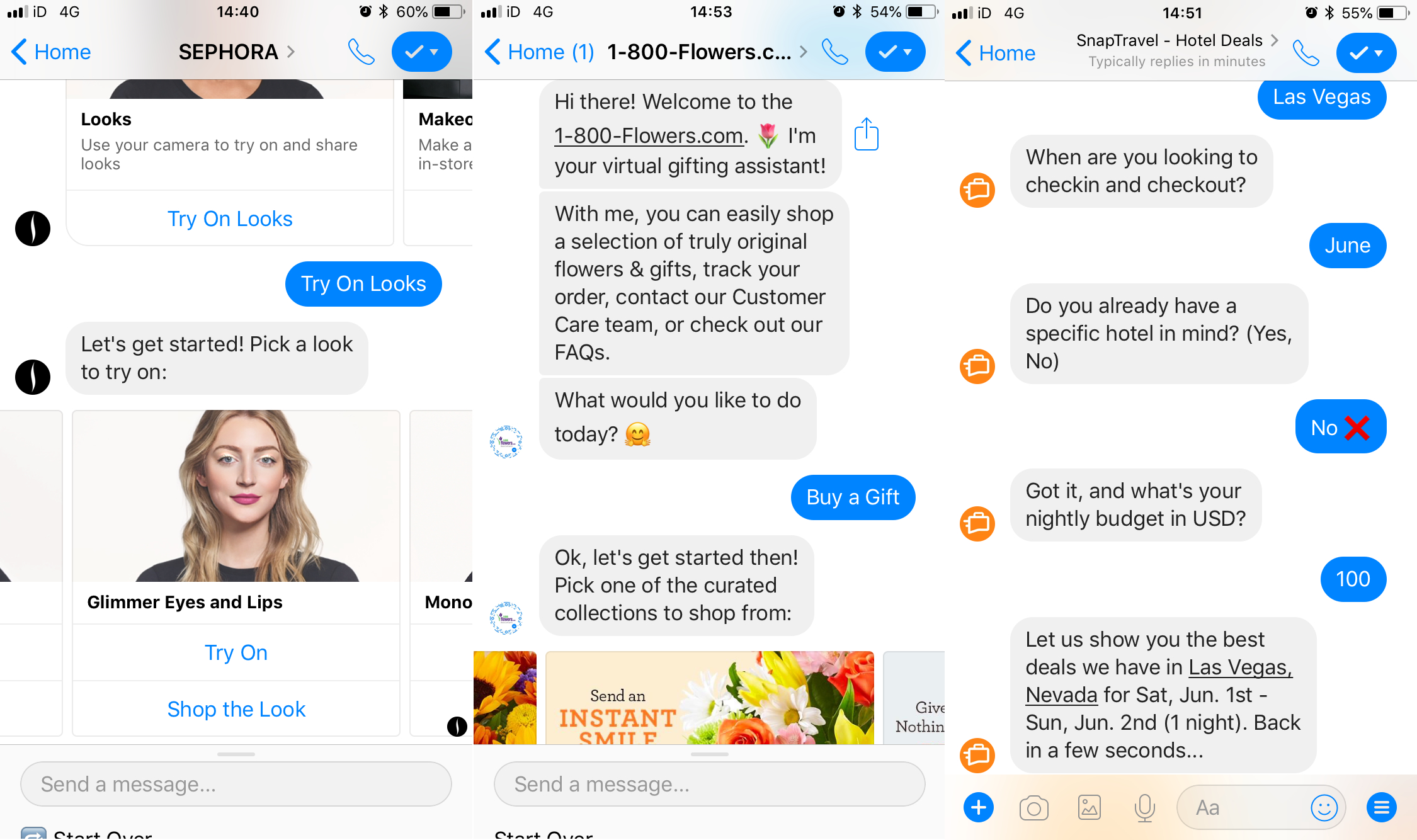A lot goes into driving conversions, and apart from the products or services themselves, the most important factor that determines whether someone converts or not is user experience (UX) — the overall experience encountered on the journey from landing to checkout. The easier and more pleasing it is, the higher the UX will be, which translates to more conversions.
The problem is that many brands fail to understand what consumers want in terms of user interfaces and designs that deliver above average UX. They think of what they want as opposed to what their users want.
They also fail to understand that the goal of design is to reduce friction and streamline accessibility for as many people as possible, something every creative design agency knows. As it happens to be, conversational designs excel at just that.
How we arrived at conversational designs
In the beginning, computers weren’t as visual as they are today. Instead of using a graphical user interface (GUI) with windows, icons and menus, they used a command line interface in which typed commands garnered responses.
In other words, if you didn’t know syntax and what commands to use when, you were left without a paddle.
Things changed with the introduction of the GUI. As a way of visualizing computer interactions with cues that replicated real-life objects, recognition took the lead and recall was left for programmers who used code in their day-to-day life.
That was then; today, a similar thing is happening, but instead of replacing command lines with graphics, we’re adding conversation into the mix as a way of creating an interface that’s as close to a human interface as possible.
In this way, we’re bringing ‘commands’ back, but this time they’re conversational and use natural language that varies and isn’t as black and white as commands that must always stay the same. In this way, we can finally interact with computers as if they were people, which is paving the path for conversational commerce.
What is conversational commerce?
Conversational commerce is a term popularized by Chris Messina, an American technology evangelist and first person to propose using hashtags (#) on Twitter as a way of grouping messages.
In a way, conversational commerce is about streamlining shopping experiences and making them less like actual shopping ventures. Instead of mimicking storefront experiences in which you:
- Browse products
- Compare them to each other
- Make a selection and add them to your cart
- Proceed to checkout and finally pay
The goal is to create an experience in which everything, from discovery to purchase, can be accomplished in a single channel and window.
For example, consider chatbots. With a chatbot residing on a website and acting as a consultant who can help multiple people at the same time, everything can be accomplished within seconds.
The best part is that all it takes is a single prompt.
Upon landing, a chatbot can simply say something along the lines of: Hello! Welcome to (Brand site), are you looking for something specific? To which the user begins describing what they want, and a back-and-forth rapport between chatbot and user takes place until a final product is selected.
At that point, checkout can also be completed within the window, essentially eliminating a checkout process that leads to 75.6% of online orders from being abandoned instead of purchased.
In fact, a HubSpot research report found that 71% of people use chatbots to solve problems fast. When you consider that 64% of people believe the biggest benefits of using a chatbot is the ability to get 24-hour service, and a slightly lesser 55% getting instant responses to inquiries, it makes sense that chatbots can help you drive more conversions.
How chatbots are currently being used
To illustrate how chatbots can help drive conversions, let’s go over a couple of brands making use of them to support their strategies:
- Sephora on Kik is a bot that provides personalized beauty tips and suggestions by asking targeted questions about your tastes, and allows purchases without ever leaving the app.
- ShopBot is eBay’s personal shopping assistant that assists users in finding what they want at the price they want. You can also upload a photo of what you’re looking for and ShopBot will find it for you.
- The H&M bot is another Kik bot that recommends products based on your preferences. Through photo options and targeted questions, the bot creates a comprehensive profile of what you like (and would like), which you can use to create your own outfits and finalise the purchase.

Concluding thoughts
When properly implemented, conversational designs can be a great help in driving conversions. To get started, get in touch with an eCommerce agency and let them know what you’re looking for.
Once you start, keep the following tips in mind:
- Let the conversation flow naturally, just as if they are talking with a real person
- Set expectations and define what can and cannot be achieved
- Focus on closed-ended questions that are more targeted and offer insights into user preferences
- Always provide immediate feedback
- As always, never stop testing
Good luck!
Access the latest business knowledge in Marketing
Get Access


Comments
Join the conversation...